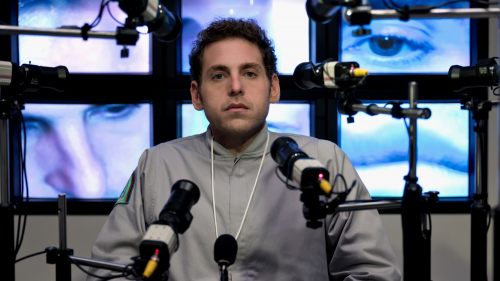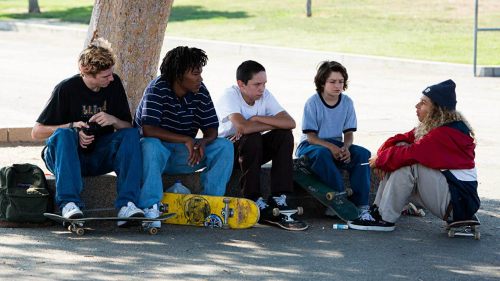22 JUMP STREET: Recoding The Rom-Com
Phil Lord & Chris Miller have carved out an interesting space for themselves: they take what seem like bad ideas and turn them into gold. Under their watch, an animated series about Lincoln, Gandhi, JFK, Cleopatra and Joan of Arc as teenage classmates became Clone High, a coming-of-age story about loss and legacy. A soulless cash-grab meant to sell toys became The Lego Movie, a meta-narrative about heroism and reconciliation. And a reboot of a cheesy '80s TV show about undercover cops infiltrating high-schools became 21 Jump Street, an inversion of the outdated high-school paradigm that pivots around a central friendship. The latter is likely going to be remembered as a comedy classic in due time, but what’s equally commendable is that Lord & Miller made lightning strike twice.
It’s hard to make a comedy sequel work. Most of them fail because they try to one-up the jokes or situations (Anchorman 2) or because the original was so unique that neither an escalated retelling nor a complete departure can have quite the same impact (The Hangover Parts II & III respectively), but 22 Jump Street takes aim at a different target entirely. Where 21 was an inversion of an established dynamic, making the ‘cool kid’ the ‘nerd’ and vice versa, 22 not only restores order to the chaos, but uses the established coding of mainstream cinematic romance in the context of its central relationship, and it’s more than just a running gag.
The standard romantic comedy tropes and their associated jargon, while certainly drawn from a discernible reality, have come to be labeled cliché because of their constant re-use as narrative shorthand. While it would be disingenuous to fault any genre for its specific trappings (and perhaps mean-spirited to dismiss one of the few aimed at women), the application of tropes in a manner that feels unearned is usually what leads to said cliché label in general. What’s interesting about 22 Jump Street however is it avoids the easy potshots at the genre. If anything, the subject of its criticism, if one might call it that, is the set of boxes we inadvertently place around concepts of romance and platonic friendship, both in cinema and in society at large, when the reality is a line that’s blurred at best.
The long-standing question of “Can men and women be just friends?” is a silly one even in the context of straight, single men and women, but it’s hard not to see why it was asked in the first place when the default expectation of such relationships was romantic. 1989’s When Harry Met Sally is considered one of the first modern romantic comedies, but the questions it asks have been hardwired into society for much longer. We built for ourselves an entire language, both visual and linguistic, that applied so exclusively to romantic relationships that thinking of them in any other context feels like an elaborate joke. The montage of a single loner walking through a park and seeing other couples – human or otherwise – would eventually be parodied on numerous sitcoms as a friend’s longing, or even a couple mourning the fact that they had no couple friends, like on How I Met Your Mother, a show that Lord & Miller had a hand in. Only as such parody montages continued to be employed more and more, all through the ‘90s until the mid-late 2000s, it became clear that what worked about them wasn’t just the seemingly ridiculous notion of a bro longing for a bro or a couple wanting a couple’s night out the same visually coded way a man might long for a woman. It was the fact that their subtexts weren’t all that different.
22 Jump Street is that joke writ large. The bro walking through the park, seeing other male duos bro-ing down and longing for a bro of his own, only it’s stretched across an entire feature in a way that works from the outset. Jenko and Schmidt’s friendship is in its honeymoon phase. They walk alongside their car at sunset, guns drawn and bodies entangled. Their individual masculine fervors give way to a warm yet sometimes argumentative camaraderie, one that’s coded no differently than a movie couple. When they go off to college together and begin to discover themselves, Jenko needs time apart with like-minded people. His football career gets in the way of them spending time together, and after a night of drinking games with Jenko’s friends, Schmidt admits to feeling out of place, even seeing Jenko’s relationship with Zook as a kind of infidelity. They decide to “investigate other people” until they can sort things out, and even end up in couple’s therapy, albeit by accident, but the reason this ‘joke’ doesn’t get old is because it comes from a very real place.
The actual romance in the film, between Schmidt and Maya, provides a nice counterfoil to his ‘bromance’ with Jenko. He wants nothing more than a typical movie fairytale, but Maya’s reluctance in favour of a more modern, casual, friends-with-benefits type setup defies his understanding of heteronormative romance. That desire is then projected onto Jenko, and after they ‘break up’ his jealousy grows as his brotrothed spends more and more time with Zook. He spies on their workout sessions and cries as they grunt in unison, but even while the homoerotic undertones are clear as day (as with most stories dealing with frats), the Schmidt-Jenko-Zook dynamic is still very much approached in a heteronormative context. Jenko first meets Zook when he drops his Q-Tip in Zook’s meat sandwich, and while that sounds like an innuendo, their meat/Q-tip incident is deemed a…. meet cute. Just the right amount of cheesy!
The film’s continued use of that dynamic, from the breakup, to the need to see other people, brings the subtext to the forefront in a way that’s familiar, but that humorous inversion eventually supplants the need for typically ‘platonic’ parameters at all. We’re never allowed a step back in order to see what this jokey, bros-as-lovers dynamic is ‘actually’ referring to, because it’s always hiding in plain sight. Nothing they say is dishonest, and the subtext may as well be the text itself.


